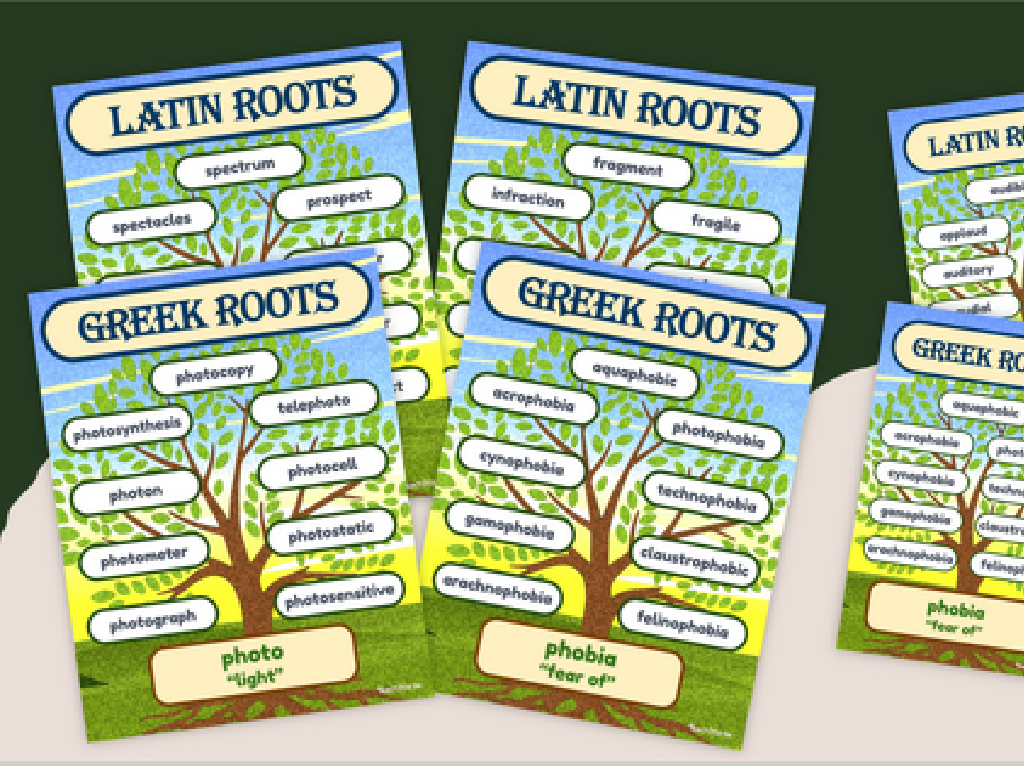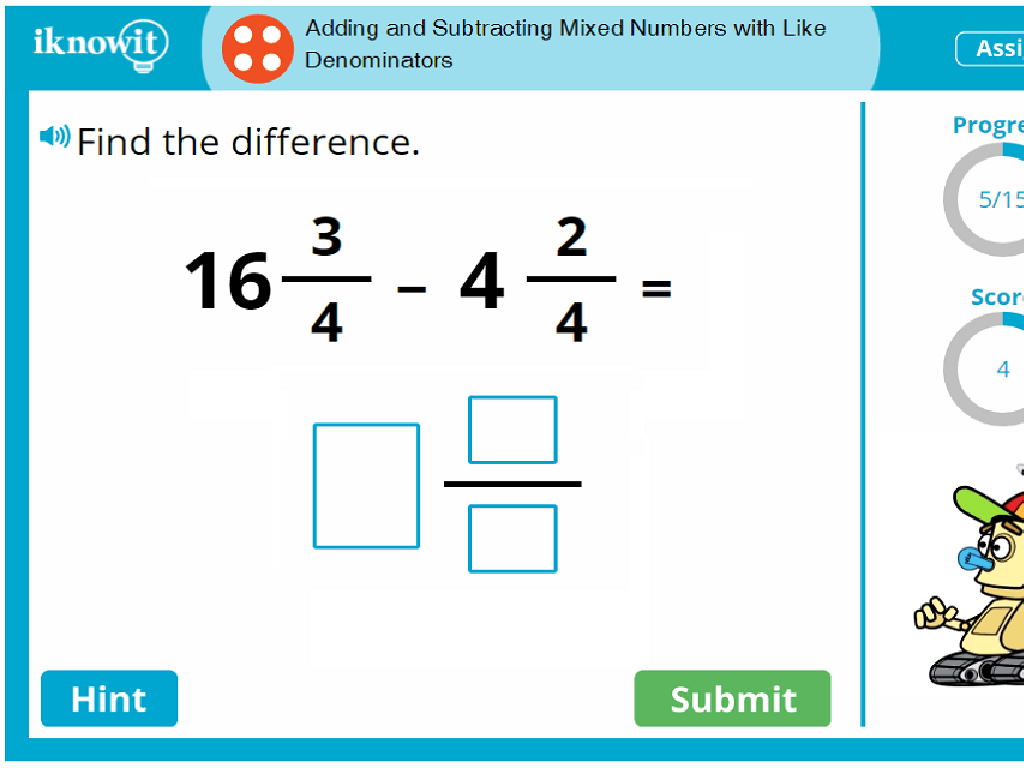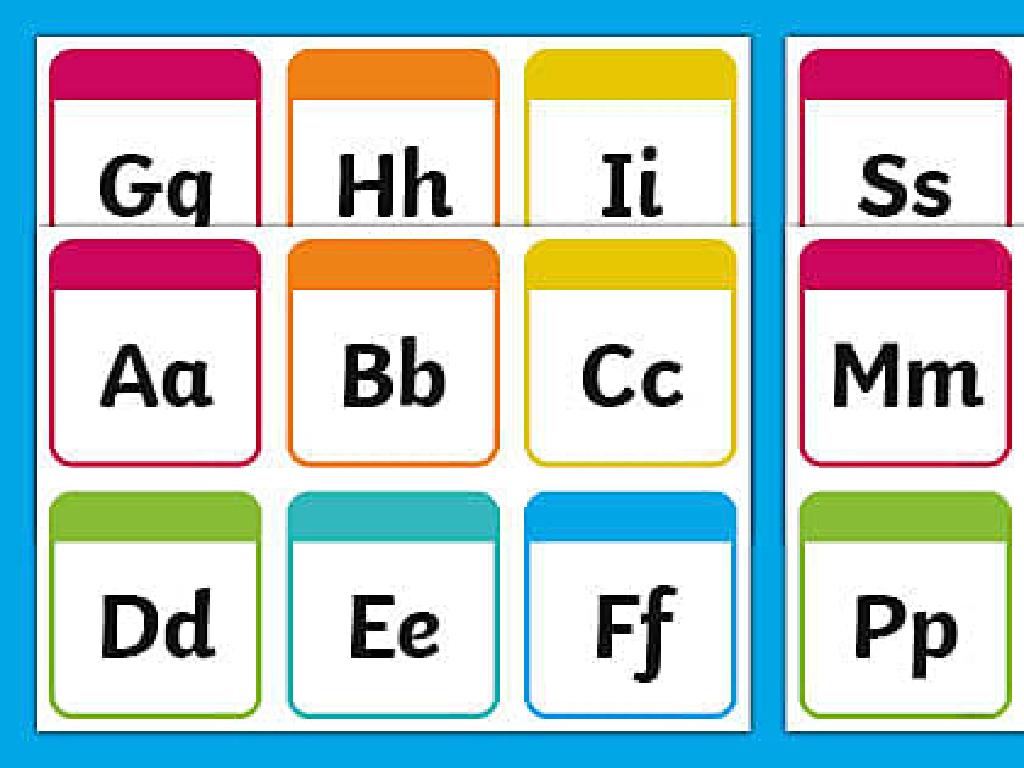Convert, Compare, Add, And Subtract Mixed Customary Units
Subject: Math
Grade: Sixth grade
Topic: Units Of Measurement
Please LOG IN to download the presentation. Access is available to registered users only.
View More Content
Welcome to Units of Measurement!
– Understanding measurement units
– Units like inches, feet, and miles
– Importance of measuring
– To quantify and compare objects
– Customary Units overview
– Units specific to the U.S. system
– Today’s focus: conversions
– Practice converting between units
|
This slide introduces the concept of measurement and its importance in everyday life. It sets the stage for today’s lesson on customary units, which are part of the United States measurement system. Students will learn about different units such as inches, feet, yards, and miles, and understand why measurement is crucial for quantifying and comparing different objects and quantities. The lesson will focus on converting, comparing, adding, and subtracting mixed units, providing a foundation for practical applications of measurement in real-world scenarios. Encourage students to think of examples where they have used measurement in their lives, such as cooking or determining the height of a plant. This will help them relate to the material and understand its relevance.
Customary Units of Measurement
– Understanding customary units
– Customary units are the measurement system used in the U.S.
– Common units: length, weight, volume
– Length (in, ft, yd, mi), Weight (oz, lb), Volume (c, pt, qt, gal)
– Everyday examples of units
– Measuring height (ft), buying fruits (lb), filling gas (gal)
– Conversion between units
– Use conversion factors to switch between units, like 3 ft = 1 yd
|
This slide introduces students to the concept of customary units, which are the standard units of measurement used in the United States. It’s crucial for students to familiarize themselves with the most common units for length (inches, feet, yards, miles), weight (ounces, pounds), and volume (cups, pints, quarts, gallons). Provide relatable examples such as measuring their height, weighing produce, or the amount of liquid in a drink container to help them understand the practical use of these units. Teach them the basic conversion factors between these units and ensure they practice converting, comparing, adding, and subtracting mixed units through various exercises. The goal is for students to become comfortable with these concepts as they are essential for everyday life and further mathematical learning.
Converting Customary Units
– Steps to convert units
– Utilize conversion factors
– A conversion factor is a number used to change one set of units to another, by multiplying or dividing.
– Example: Convert 3 feet to inches
– 3 feet equals 36 inches because 1 foot equals 12 inches.
– Practice with different units
|
This slide introduces students to the concept of converting between different customary units. Start by explaining the process of conversion, which involves multiplying or dividing by a conversion factor. Emphasize the importance of knowing the conversion factors between units, such as 12 inches in a foot or 3 feet in a yard. Use the example of converting 3 feet to inches to illustrate the process. Provide students with a list of conversion factors and encourage them to practice converting various measurements as homework. This will help solidify their understanding of the relationship between different customary units.
Comparing Customary Units
– Larger vs. smaller units
– Understand that units like gallons are larger than pints
– Choosing the right unit
– Use ounces for a package of cheese, pounds for a person’s weight
– Pounds vs. ounces
– 16 ounces in 1 pound, compare using this ratio
– Practical comparison example
– If a newborn weighs 8 pounds, how many ounces is that?
|
This slide aims to help students grasp the concept of relative sizes of customary units and how to choose the most appropriate unit for different scenarios. Emphasize the importance of understanding that some units are better suited for measuring certain things than others. For example, ounces are used for small quantities, while pounds are used for larger weights. Provide a clear example, such as converting and comparing weights in pounds and ounces, to solidify their understanding. Encourage students to think about why we wouldn’t measure a person’s weight in ounces or a package of cheese in pounds. The practical example should involve converting a known weight in pounds to ounces to help students practice the concept.
Adding Customary Units
– Steps for adding same dimension units
– Ensure units are the same, convert if necessary, then add.
– Example: Gallons plus quarts
– Convert gallons to quarts (1 gallon = 4 quarts), then add to quarts.
– Practice: 2 gallons + 3 quarts
– Convert 2 gallons to quarts (2 x 4), then add 3 quarts. What’s the total?
|
When adding customary units, it’s crucial that the units are the same before combining them. For example, to add gallons and quarts, students must first convert gallons to quarts since 1 gallon equals 4 quarts. After conversion, they can add the quantities directly. The practice problem reinforces this concept by asking students to convert 2 gallons to quarts and then add the additional 3 quarts. Teachers should prepare to explain the conversion process, provide additional examples if needed, and encourage students to visualize the quantities using real-life objects like milk containers to aid understanding.
Subtracting Customary Units
– Steps for unit subtraction
– Convert to the same units, then subtract
– Example: Pounds and ounces
– Subtract 3 pounds 4 ounces from 6 pounds 12 ounces
– Practice: Subtract weights
– Try subtracting 5 pounds 8 ounces from 10 pounds
– Ensure same dimension
|
When teaching subtraction of customary units, start by explaining the importance of having the same dimension (e.g., both weights must be in pounds and ounces). Demonstrate with an example, such as subtracting pounds and ounces, and show the conversion process if necessary. For the practice problem, guide students to subtract 5 pounds 8 ounces from 10 pounds, ensuring they understand the need to borrow if the ounces in the minuend are less than the ounces in the subtrahend. This slide will help students grasp the concept of subtracting mixed units by providing a clear method and an opportunity for hands-on practice.
Understanding Mixed Customary Units
– Define mixed units
Mixed units combine different measurements, like feet and inches.
– Importance of mixed units
– Example: 5 feet 3 inches
5 feet 3 inches means 5 full feet plus an additional 3 inches.
– Conversion and calculation tips
Use rulers or tape measures for real-world application; practice converting between units.
|
This slide introduces the concept of mixed customary units, which are often used in everyday measurements in the United States. Mixed units are combinations of different measurement units, such as feet and inches, used to provide more precise measurements. For example, a person’s height might be 5 feet 3 inches, which is more specific than just saying 5 feet. It’s crucial for students to understand why mixed units are practical and how to work with them. Teach students how to convert between units (e.g., inches to feet) and perform calculations involving mixed units. Provide practice problems that involve real-world scenarios, such as measuring objects or distances, to reinforce these concepts.
Adding & Subtracting Mixed Units
– Converting to smaller units
– Convert larger units to smaller ones for easy calculation, e.g., 1 ft = 12 in
– Adding mixed units
– Add units separately: 3 ft 4 in + 2 ft 7 in = (3+2) ft + (4+7) in
– Subtracting mixed units
– Subtract smaller from larger: 5 ft 9 in – 2 ft 6 in = (5-2) ft + (9-6) in
– Simplifying final answers
– Convert excess inches to feet, e.g., 60 in = 5 ft, then add to feet
|
This slide is aimed at teaching students how to handle mixed customary units when adding or subtracting. Start by converting all measurements to the smallest units involved to simplify the process. When adding or subtracting, treat each unit separately, combining like units. After performing the operations, simplify the answers by converting any excess smaller units back into larger units where appropriate. For example, if the result is 14 inches, convert this to 1 foot 2 inches. Encourage students to practice with real-world examples and ensure they understand the importance of keeping track of their units throughout the process.
Class Activity: Measurement Mania!
– Partner up for conversion fun
– Convert items around the classroom
Use rulers or tape measures to find lengths, widths, and heights.
– Add and subtract your measurements
Combine or compare different measurements you’ve taken.
– Share and discuss findings
|
This interactive activity is designed to help students apply their knowledge of converting, comparing, adding, and subtracting mixed customary units in a practical setting. Provide students with rulers or tape measures. They should work in pairs to measure various items in the classroom, such as desks, books, or windows, and then perform conversions between units (inches to feet, for example). Encourage them to add and subtract measurements to solve problems you provide. Possible activities: 1) Measure and compare the height of two different chairs. 2) Add the lengths of two desks to find the total. 3) Subtract the width of a book from the width of a desk. 4) Convert the height of a bookshelf from feet to inches. After completing their measurements, students should share their results with the class and discuss any challenges they faced or interesting observations they made.
Wrapping Up: Customary Units
– Recap of measurement concepts
– Why customary units matter
– Knowing these units is crucial for everyday tasks and many professions.
– Homework: Practice worksheet
– Worksheet includes problems on conversion, comparison, addition, and subtraction of mixed units.
– Keep practicing at home!
|
As we conclude today’s lesson, it’s important to review the key concepts we’ve covered about converting, comparing, adding, and subtracting mixed customary units. Understanding these units is essential for real-world applications such as cooking, construction, and science. For homework, students will complete a worksheet that will reinforce today’s lesson and provide additional practice. This will help solidify their grasp of the material. Encourage students to continue practicing these skills outside of the classroom to become more comfortable with customary units. Remind them that mastery of these concepts is not only important for academic success but also for practical, everyday situations.






